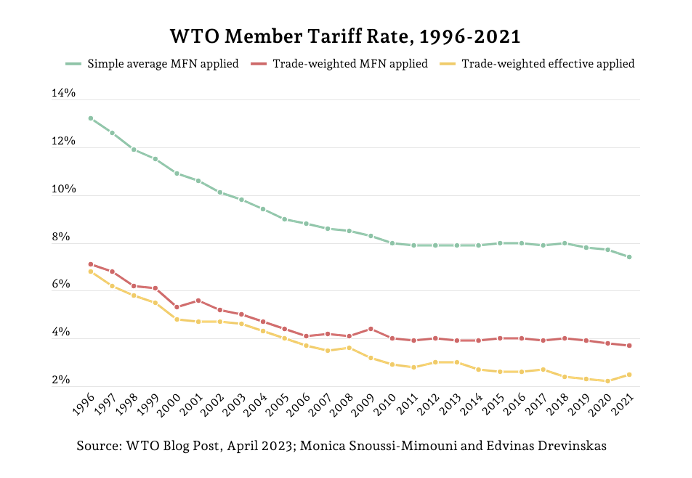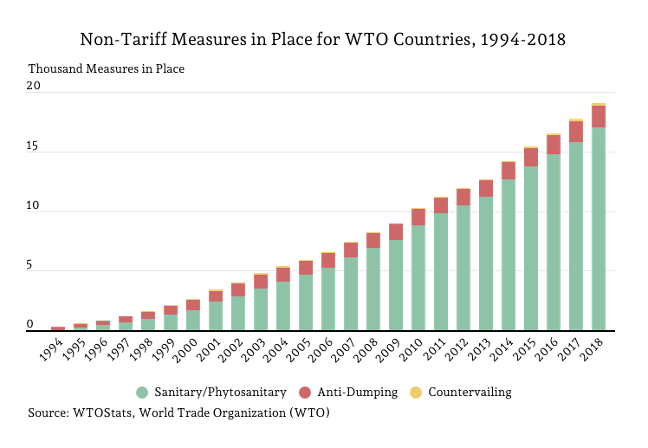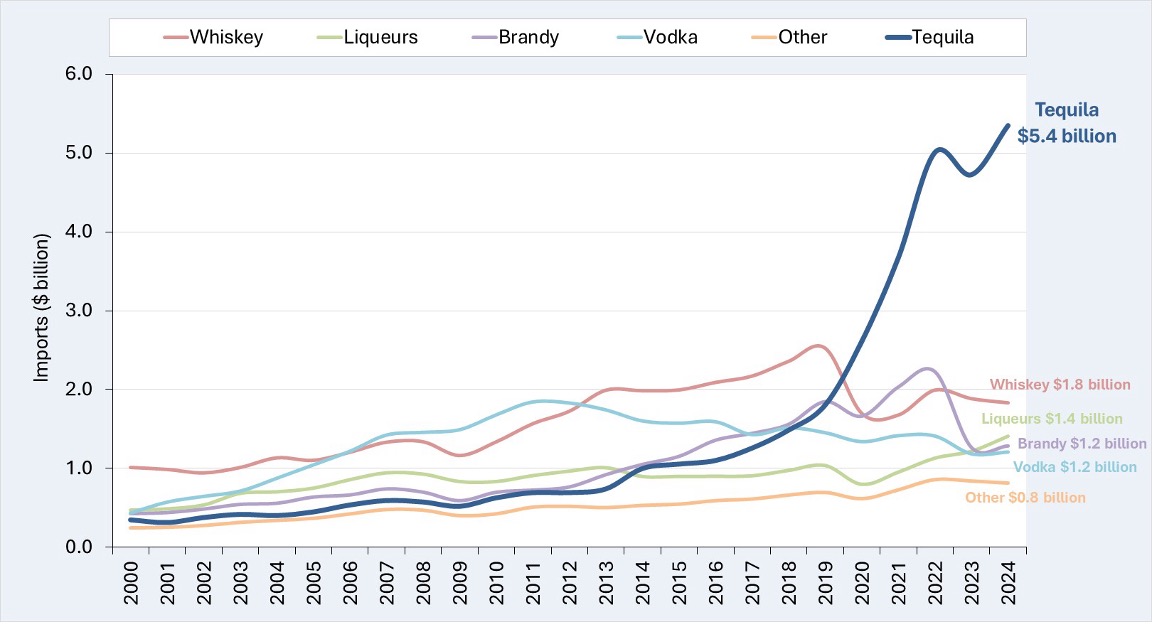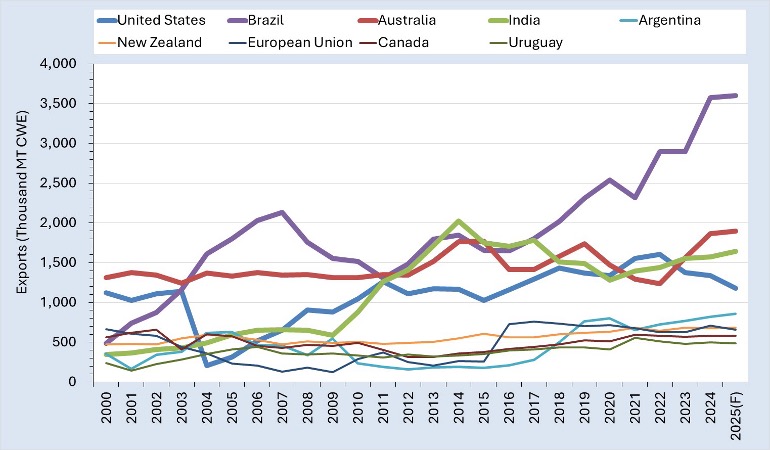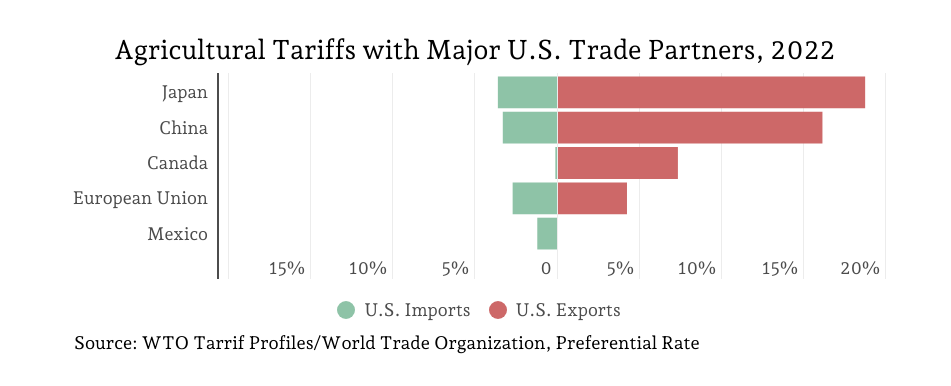After numerous rounds of reciprocal tariff hikes, the tariffs between the U.S. and China have escalated to 145% and 125%, respectively. This raises a critical question: Can U.S. agricultural exports to China withstand such steep retaliatory tariffs? To delve deeper into this issue, let’s examine the impact of prohibitively high tariffs on U.S. beef exports, a significant component of U.S. agricultural trade with China.
As noted in a previous article, China has emerged as a major player in global beef trade. Although once a minor importer, China is now the largest beef importing country in the world. In 2010, Chinese beef imports were only $84 million, but by 2022, they increased by 21,000% to nearly $18 billion (See SAT: https://southernagtoday.org/2022/12/01/china-emerges-as-a-leading-destination-for-u-s-beef-exports/). This remarkable rise can be attributed to several factors, including economic growth, urbanization, and changing preferences for quality protein sources. The increase in imports was further accelerated by the outbreak of African Swine Fever in 2018, which decimated pork supplies and led to a significant shift towards beef. Due to rising demand and imports, coupled with lifting the import restriction on U.S. beef in 2017, China is now the third largest foreign market for U.S. beef behind South Korea and Japan (USDA, 2025).
Since 2017, the U.S. has significantly increased its beef exports to China. In 2018, U.S. beef exports were valued at around $64 million, but by 2024, increased to approximately $1.5 billion (See Figure 1). As the figure shows, Brazil is the leading exporter of beef to China, reaching approximately $6.2 billion in 2024 (45% of total Chinese imports). Other noted suppliers include
Argentina, Australia, New Zealand, and Uruguay.
The figure underscores the competitive landscape of imported beef in China, with the U.S. emerging as a key player alongside Argentina, Australia, Brazil, New Zealand, and Uruguay. We can assess the impact of tariffs on these countries using price elasticity estimates from previous research (Hossen and Muhammad, 2025). The price elasticity refers to how the quantity imported responds to changes in import prices (own or competitor’s). Based on estimates from previous research, U.S. beef exports to China could decline by more than 77% in the short run, amounting to more than $1.0 billion in lost export sales. In the long run, U.S. beef exports to China will likely fall to zero if the high tariff persists. Interestingly, competing beef exports from Brazil and other countries could also decline (although by much smaller values) due to complementarities in importing. However, our estimates suggest that Uruguay could possibly benefit, but the benefit would be a fraction of U.S. losses. The U.S. has managed to capture a substantial share of the Chinese beef market (11% in 2024). Challenges posed by recent tariffs and trade barriers could cause the U.S. to lose it all.
Figure 1. Chinese Beef Imports: 2010 – 2024
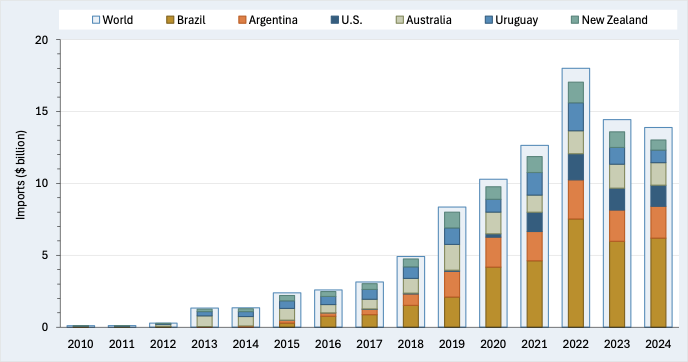
For more information:
Hossen, M.D. and Muhammad, A. (2025). “Assessing the Impacts of Maritime Freight Rates on Global Beef Trade” Agribusiness. https://doi.org/10.1002/agr.22030
USDA (2025). Global Agricultural Trade System. Foreign Agricultural Service. https://apps.fas.usda.gov/gats/default.aspx
Muhammad, Andrew, and Md Deluiar Hossen. “High Tariffs Could Halt U.S. Beef Exports to China.” Southern Ag Today 5(16.4). April 17, 2025. Permalink


